Frame differences
Moto Guzzi V700, V7 Special, Ambassador, 850 GT, 850 GT California, Eldorado, and 850 California Police models
Updated:
Not all frames were made the same. Here are a few of the key differences.
Siren mount
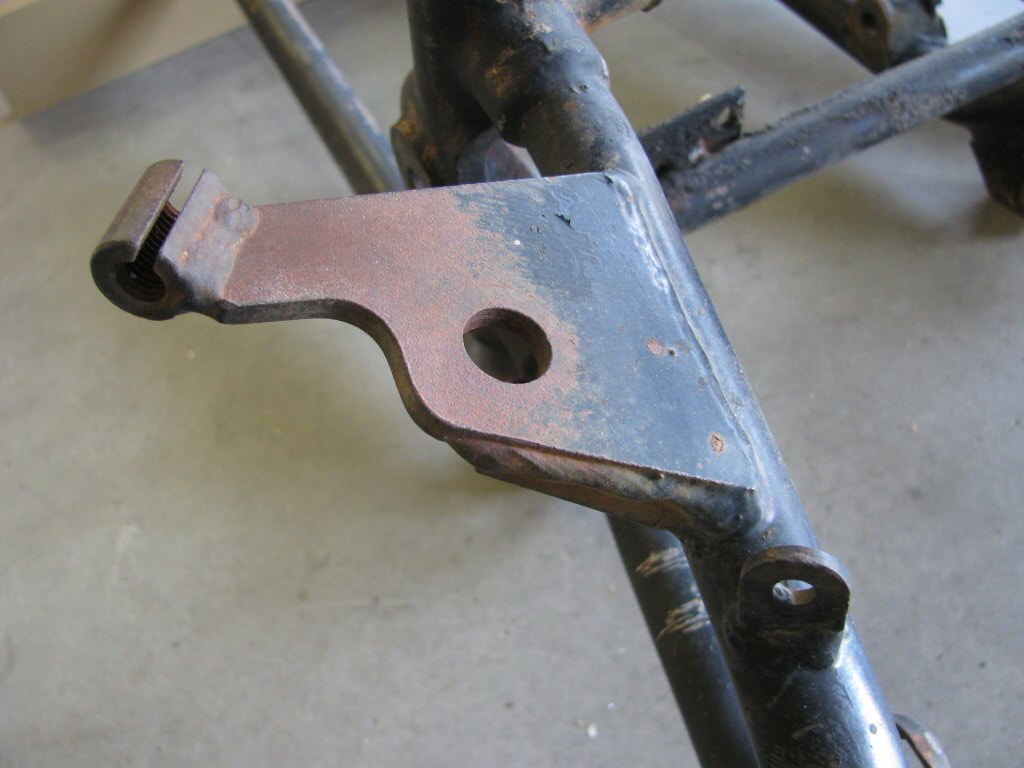
Photo courtesy of Gregory Bender.
Rear fender mount
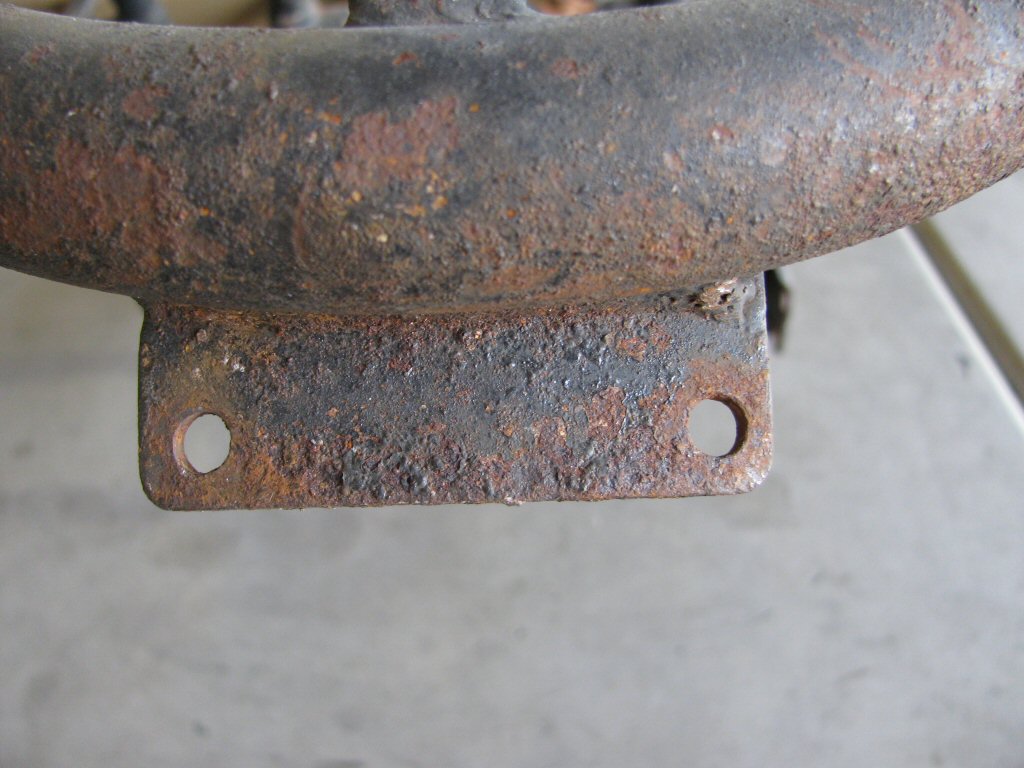
Civilianmount - note the lack of indents.
Photo courtesy of Gregory Bender.
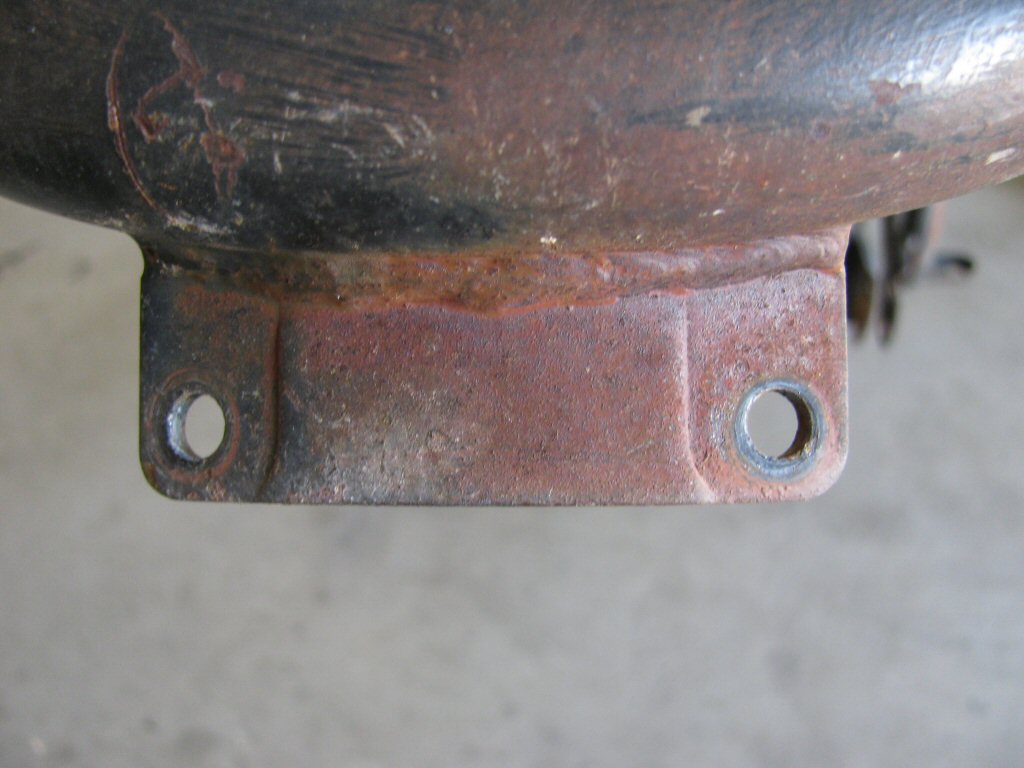
Policemount - note the indents.
Photo courtesy of Gregory Bender.
Coil mount
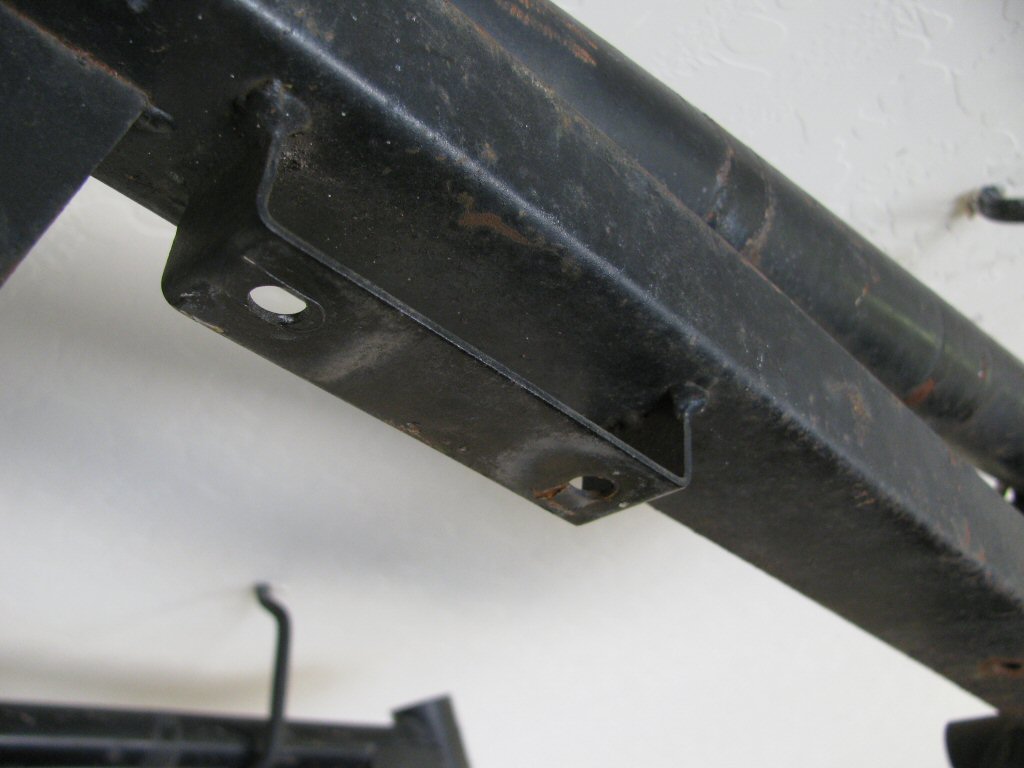
Photo courtesy of Gregory Bender.
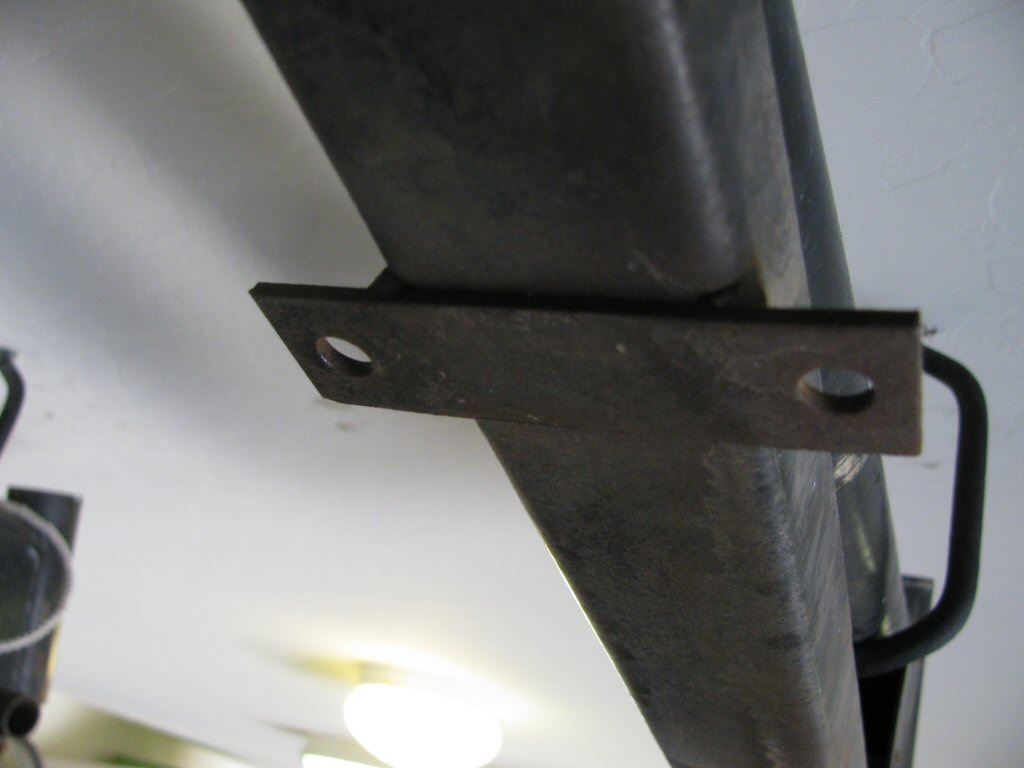
Photo courtesy of Gregory Bender.
Side stand mount
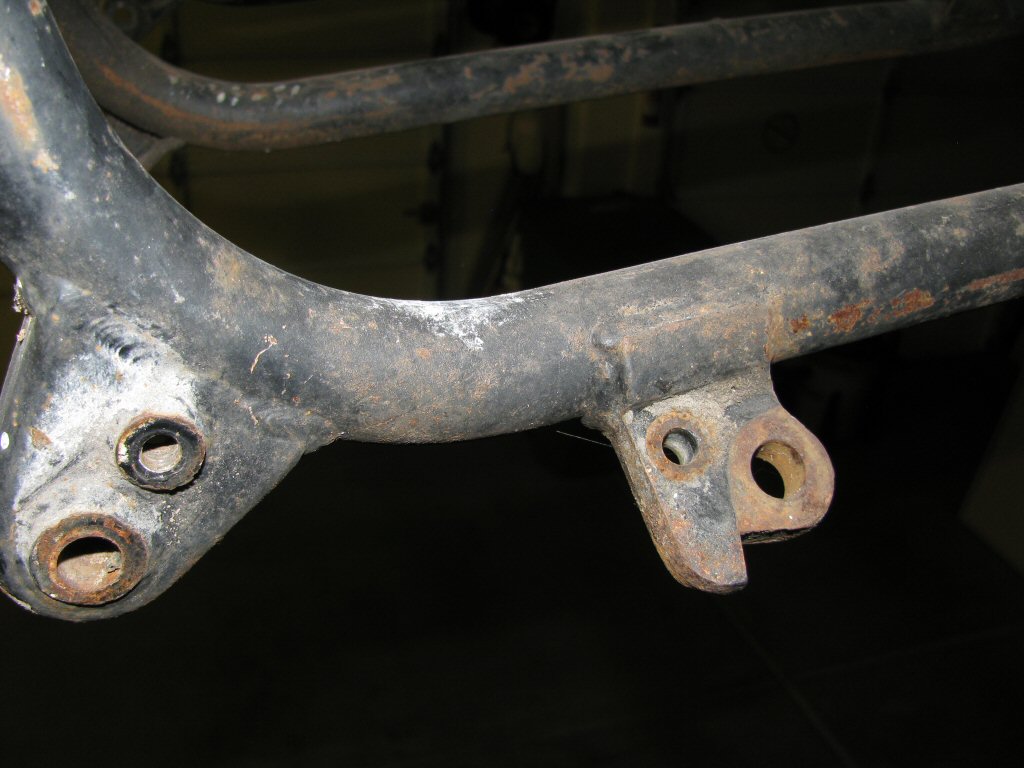
Civilianframe with the
frontside stand mount.
Photo courtesy of Gregory Bender.

Civilianframe with the
midside stand mount.
Photo courtesy of Charlie Mullendore of Antietam Classic Cycle.
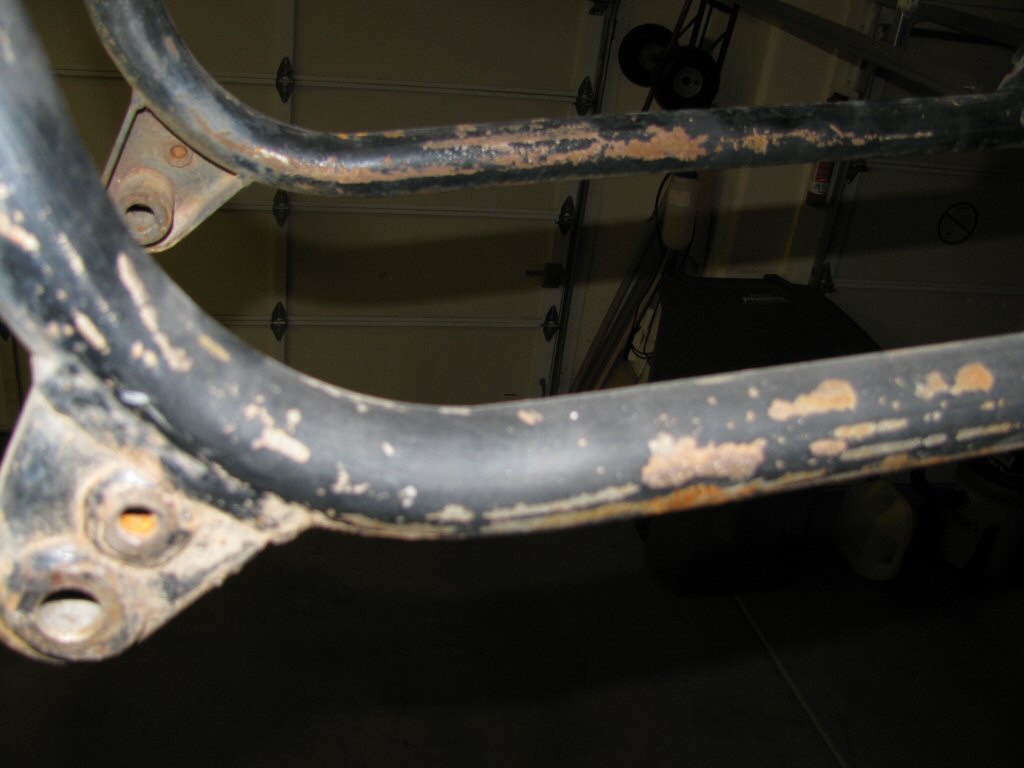
Policeframe lacking the side stand mount.
Photo courtesy of Gregory Bender.
Rear crash bar mount
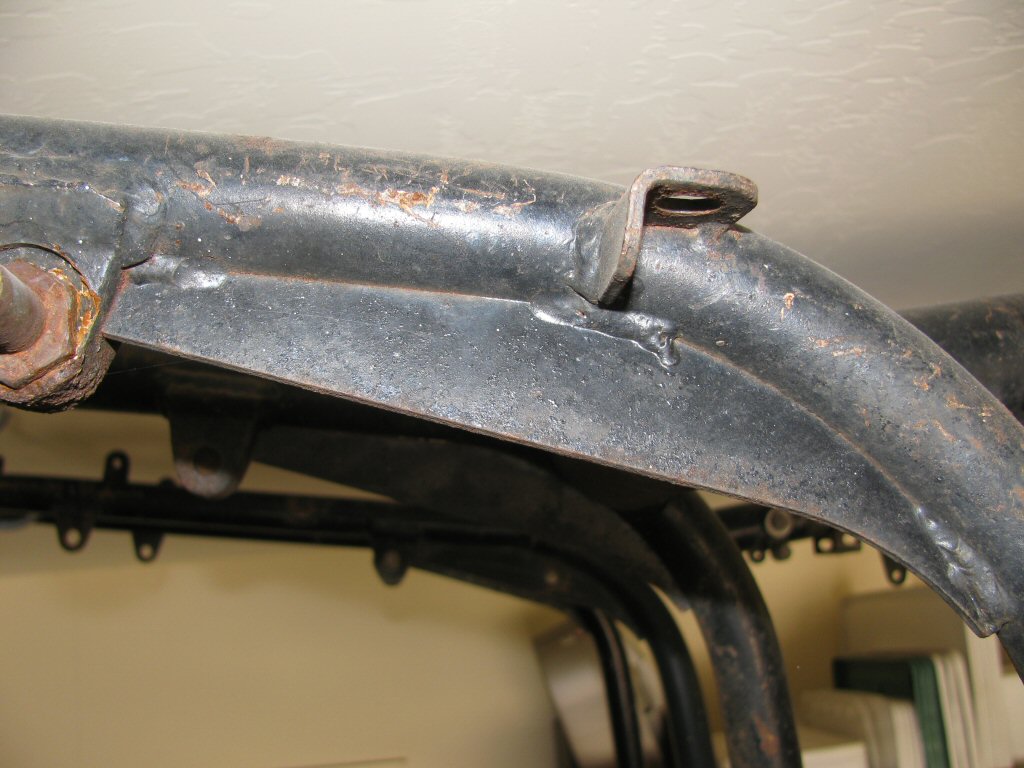
Civilianframe lacking the reinforced holes for the rear crash bars.
Photo courtesy of Gregory Bender.
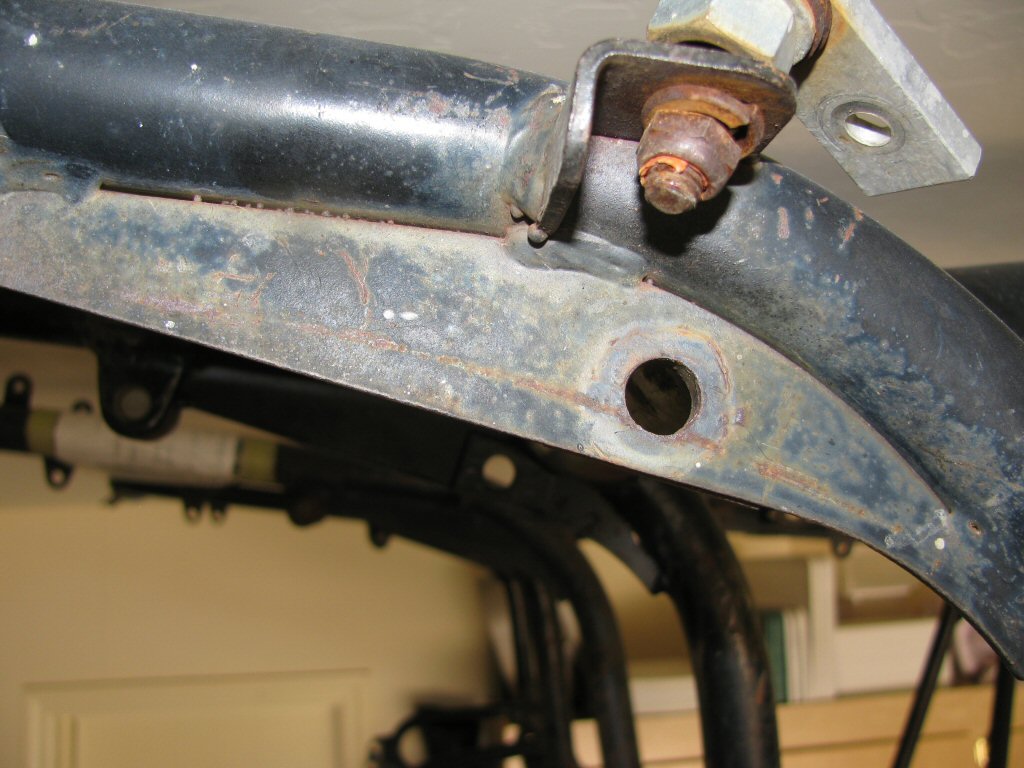
Policeframe with the reinforced holes for the rear crash bars.
Photo courtesy of Gregory Bender.
Steering neck
Early V700 models had a shorter top frame tube and - correspondingly - less space between the front tank mounting hole and the steering neck. Subsequent models had a longer top frame tube and - thus - more space between the front tank mounting hole and the steering neck. Be sure to read Fuel tank fitment on various frames for real world implications of this difference.
To measure this, I started by lining up two frames side-by-side. Lacking a precision jig, I aligned everything the best that I could visually. It should be noted that the remainder of the frame components (aside from the steering neck) matched very well between both frames.
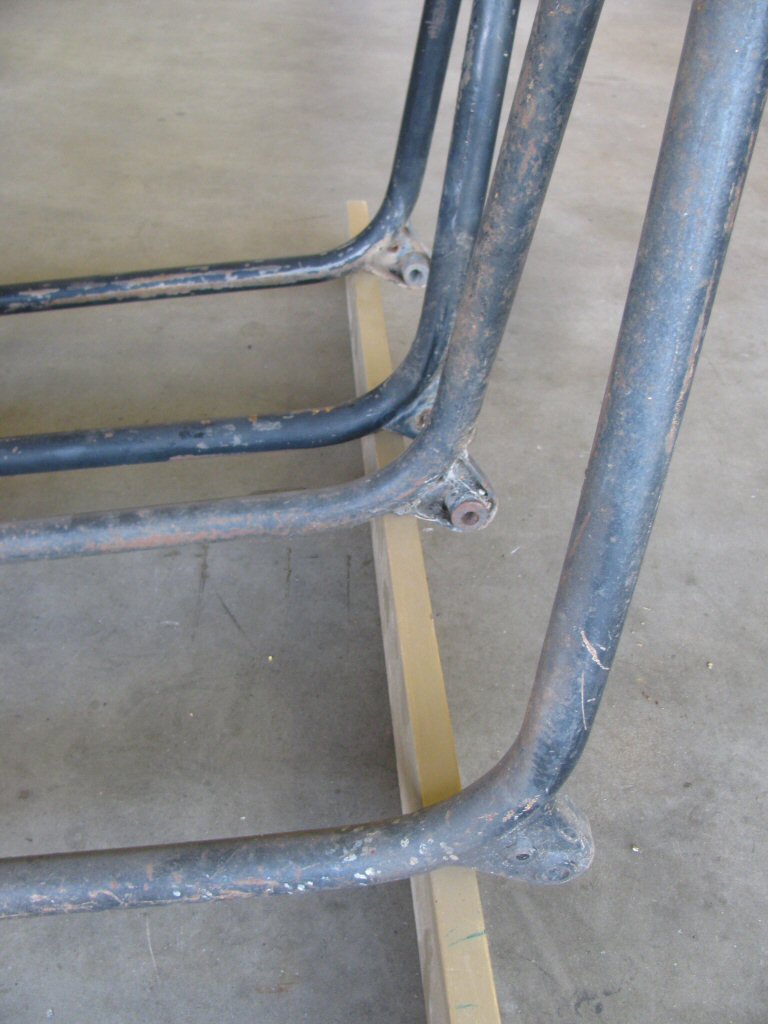
Photo courtesy of Gregory Bender.
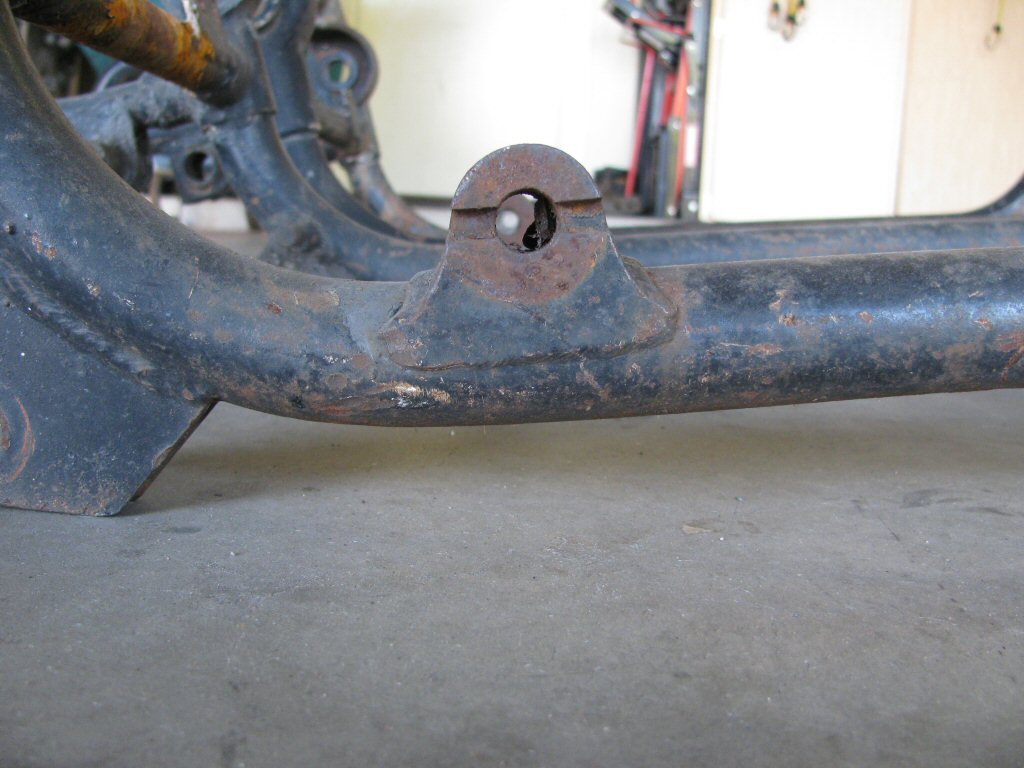
Photo courtesy of Gregory Bender.
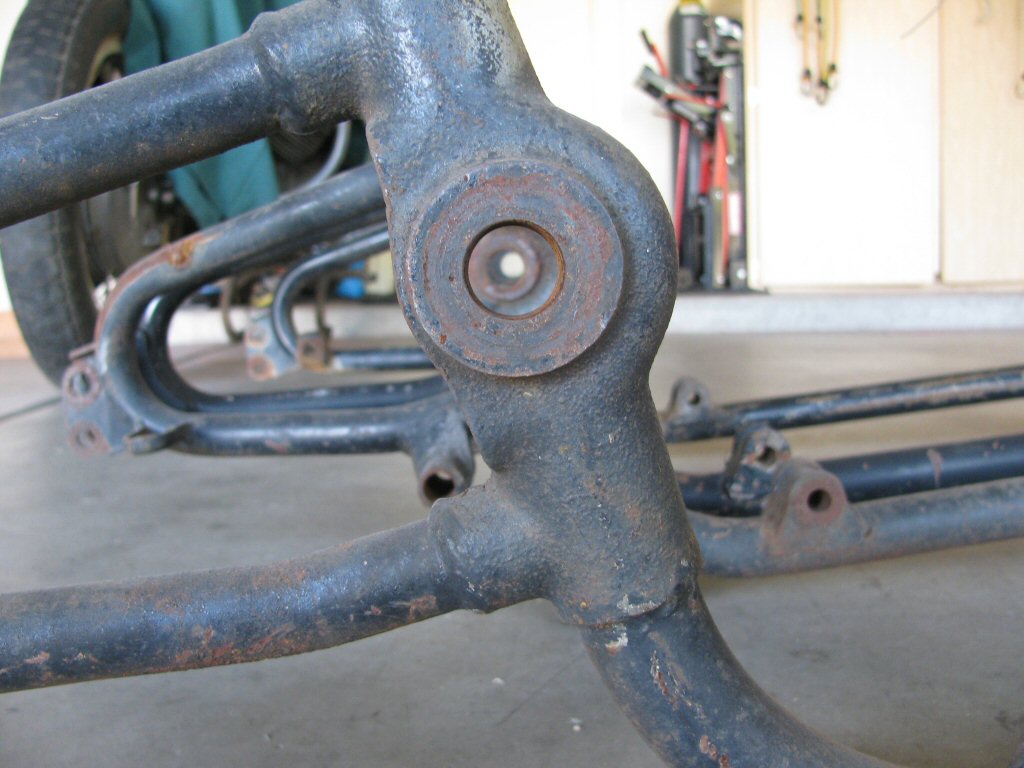
Photo courtesy of Gregory Bender.
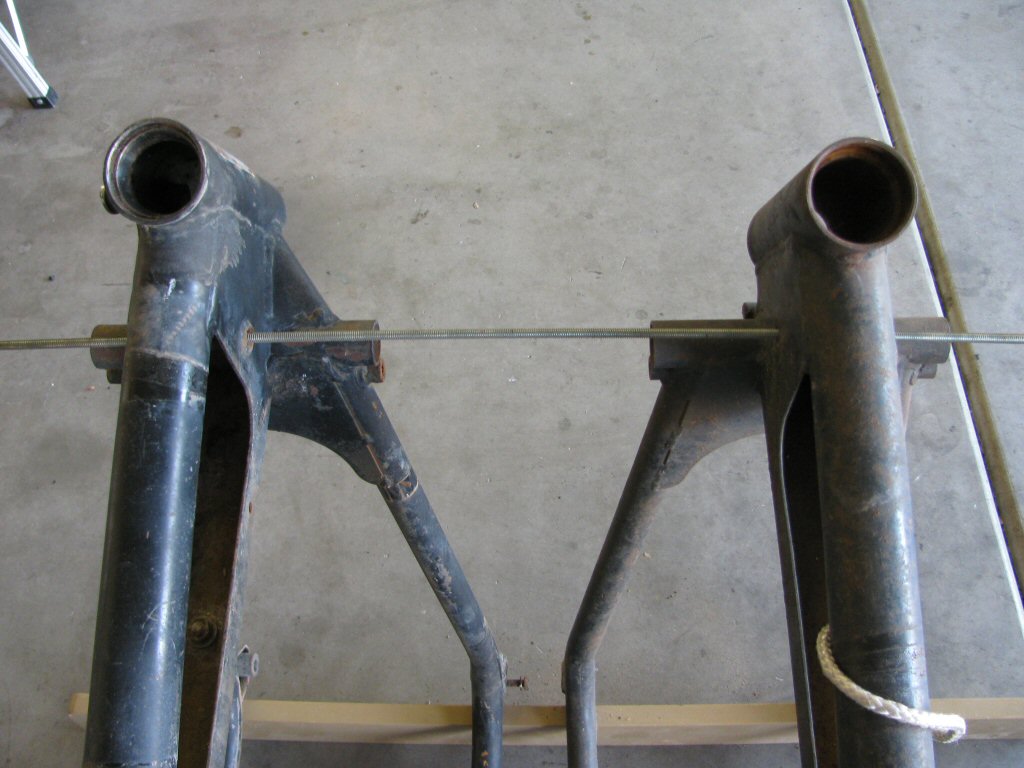
Photo courtesy of Gregory Bender.
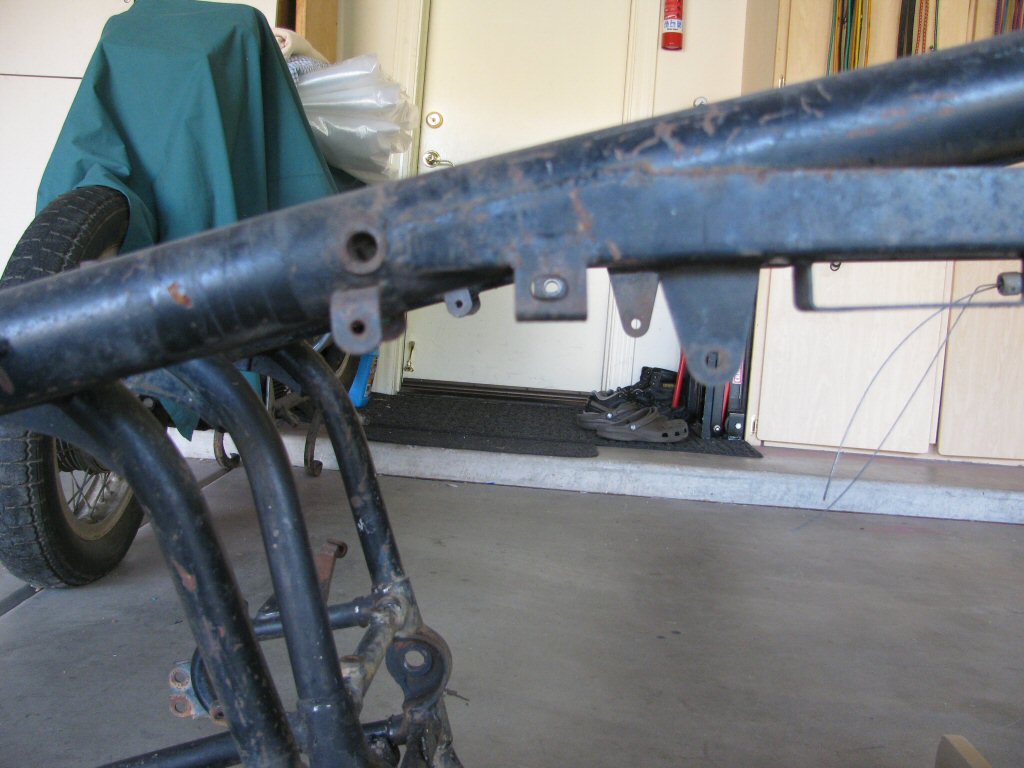
Photo courtesy of Gregory Bender.
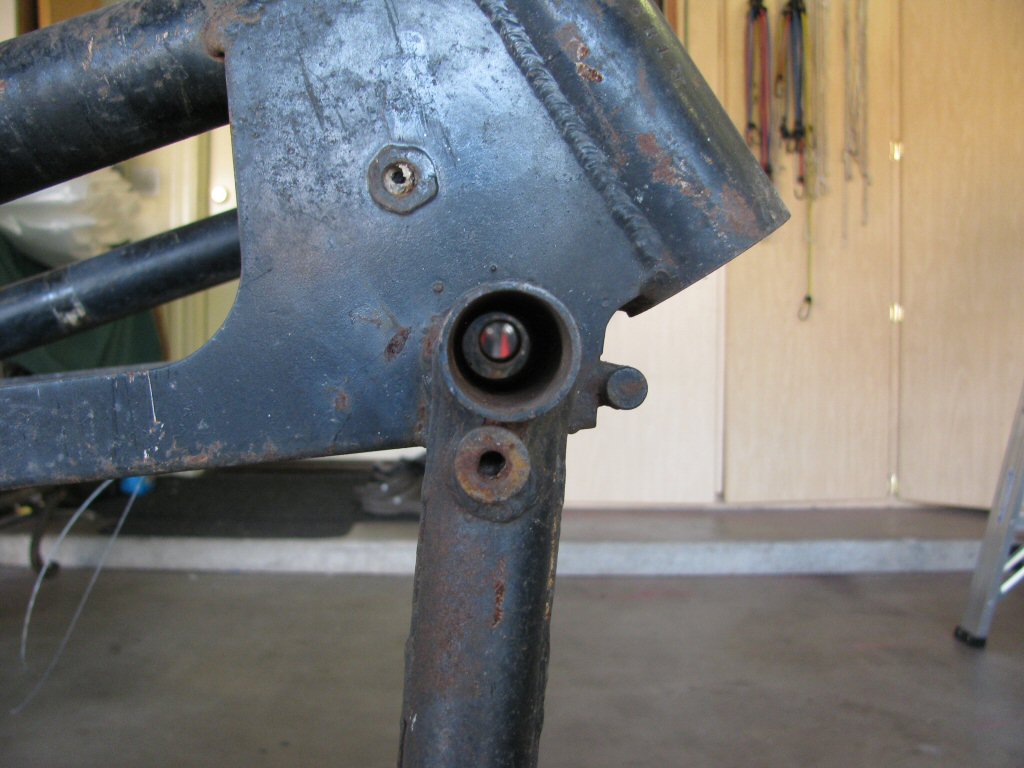
Photo courtesy of Gregory Bender.
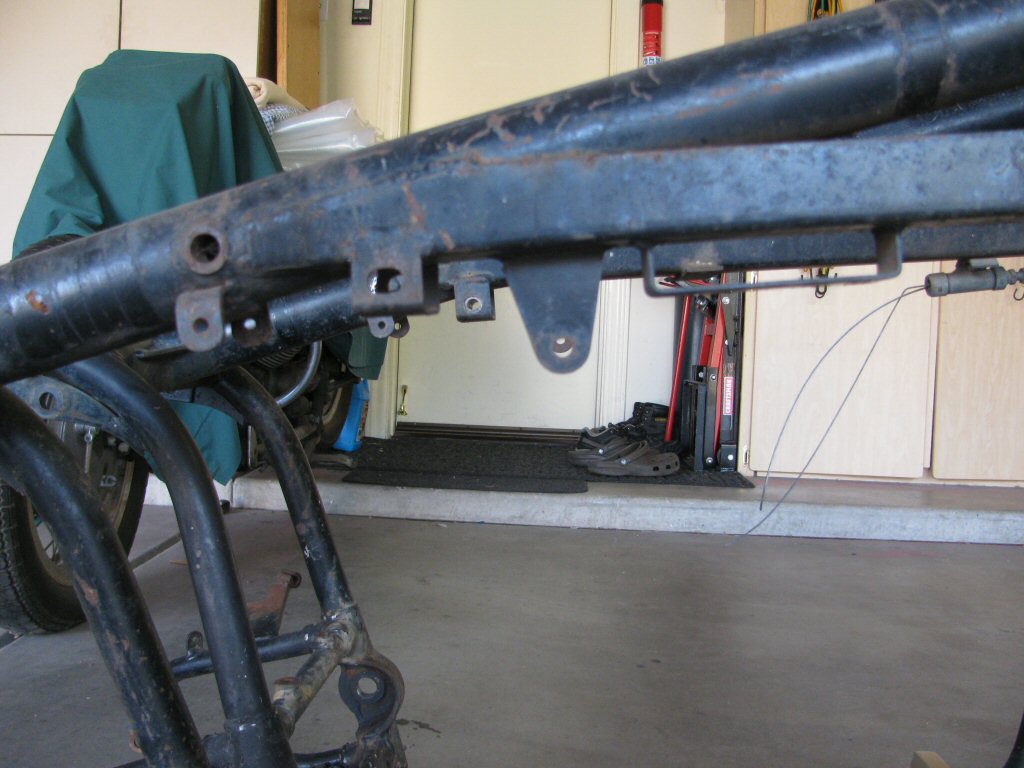
Photo courtesy of Gregory Bender.
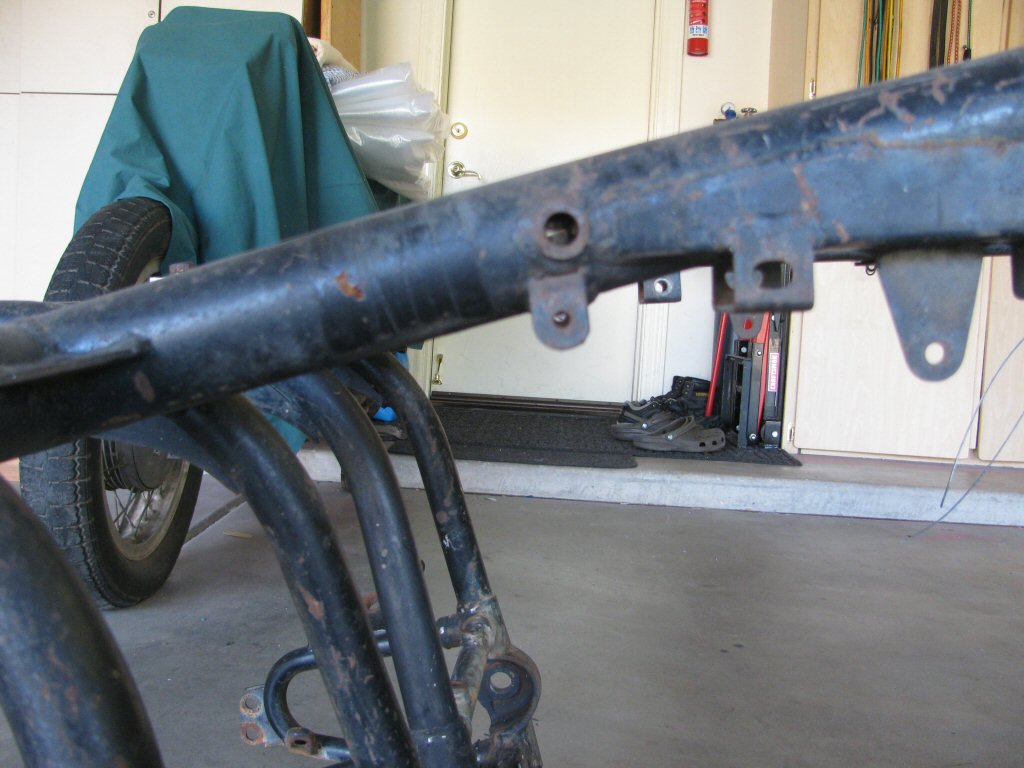
Photo courtesy of Gregory Bender.
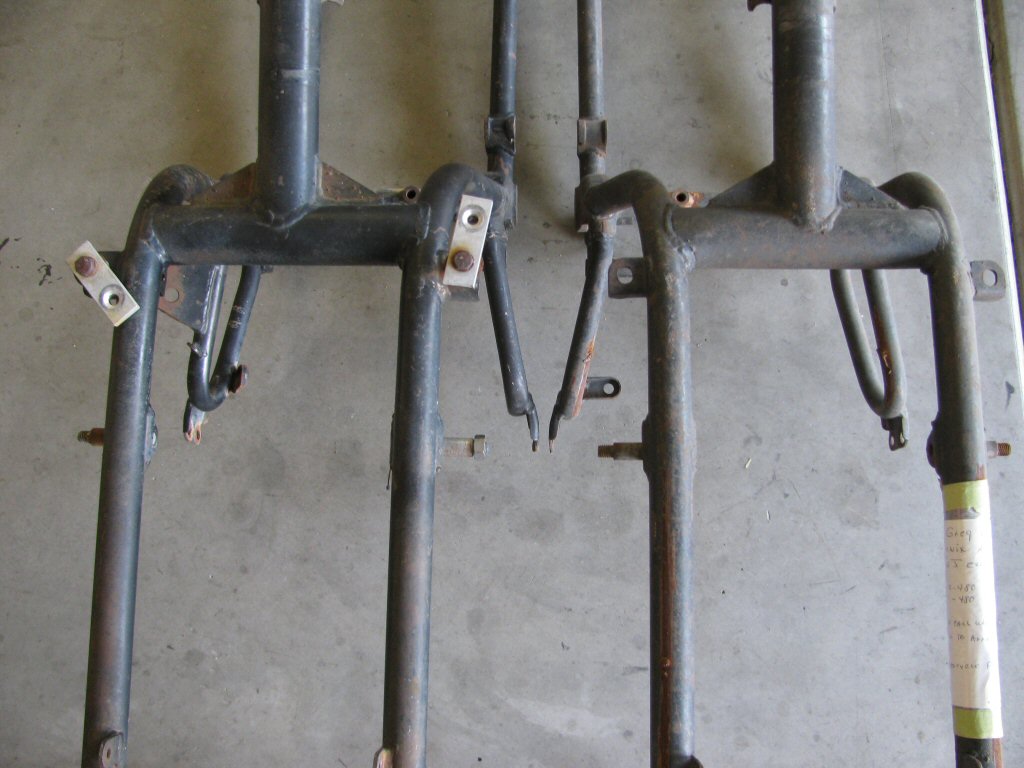
Photo courtesy of Gregory Bender.
Then I measured the vertical and horizontal placement of the steering neck relative to the front tank mounting hole.
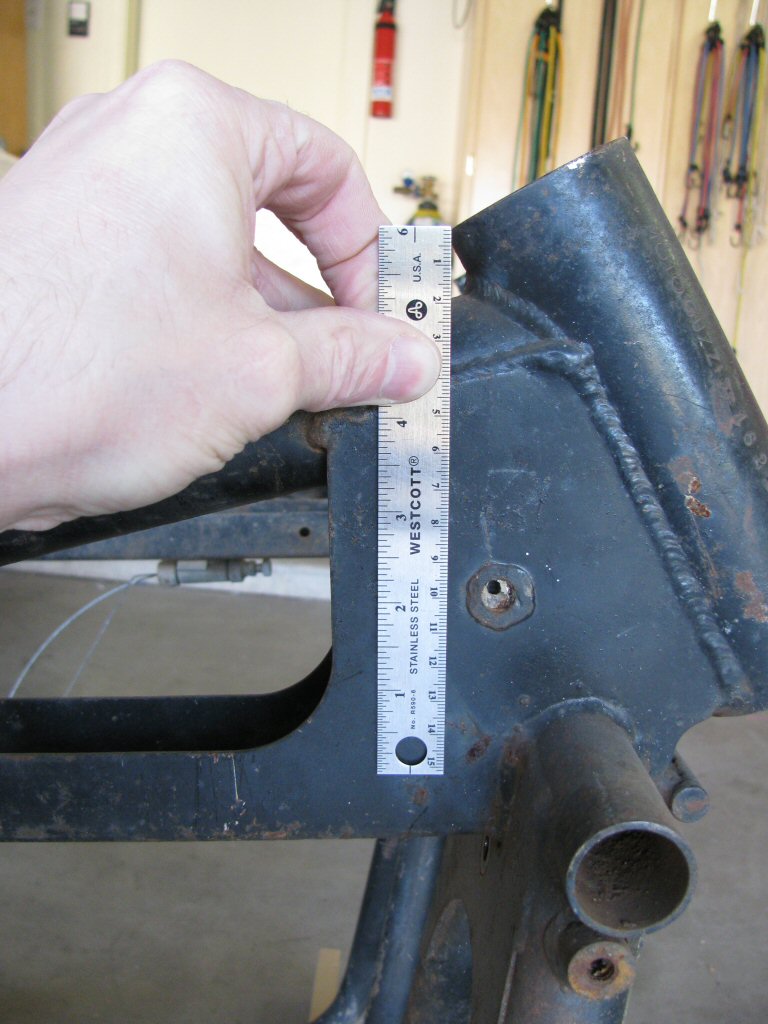
Photo courtesy of Gregory Bender.
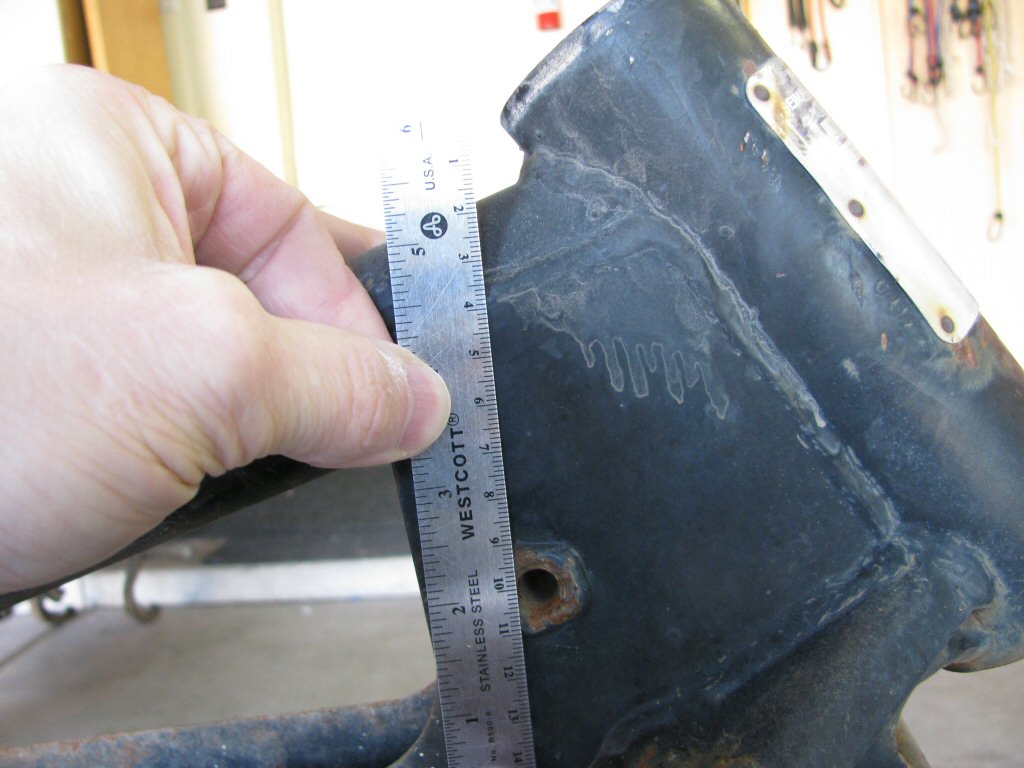
Photo courtesy of Gregory Bender.
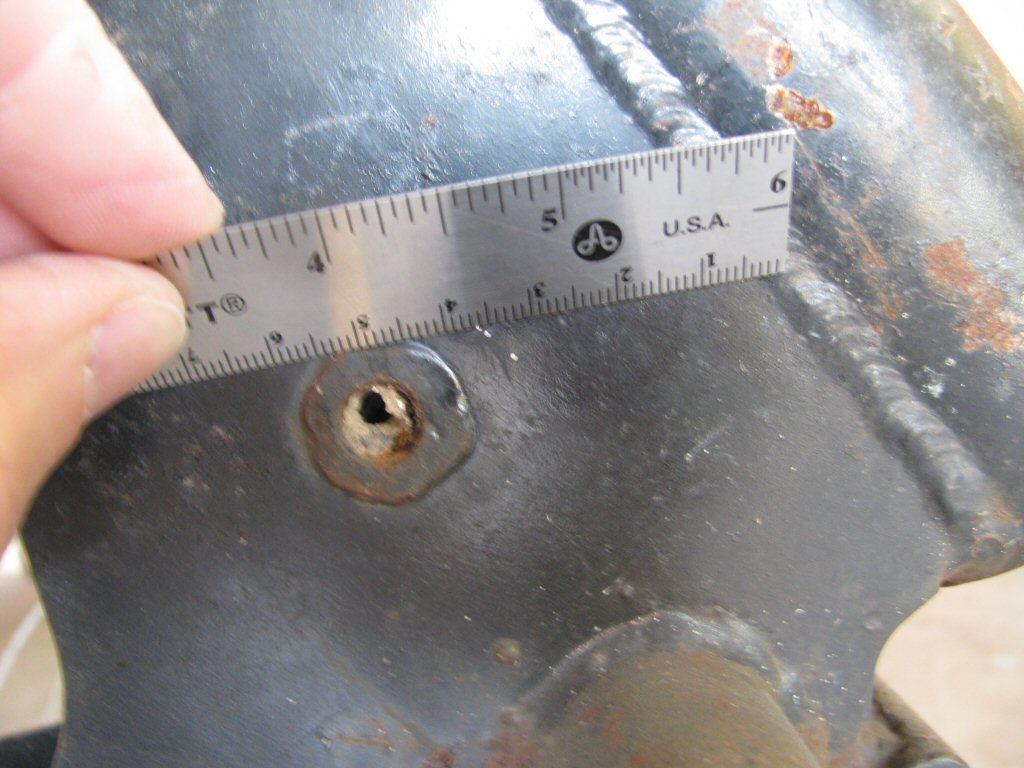
Photo courtesy of Gregory Bender.
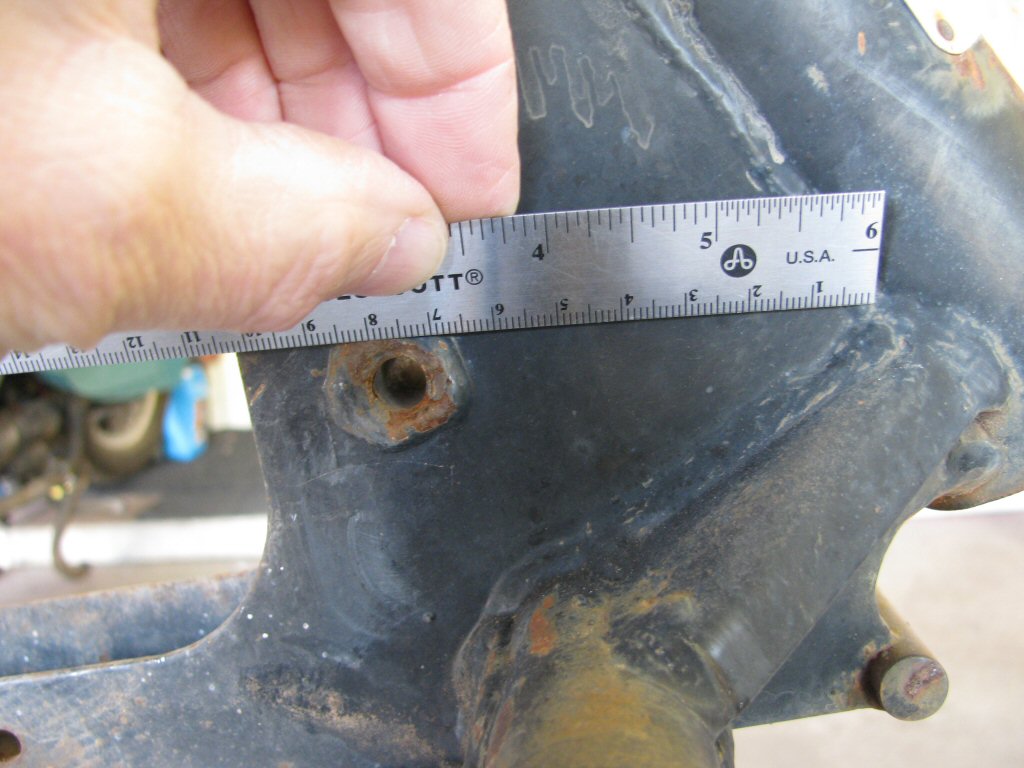
Photo courtesy of Gregory Bender.
The steering stem on the later frame clearly protrudes further forward than the early frame.
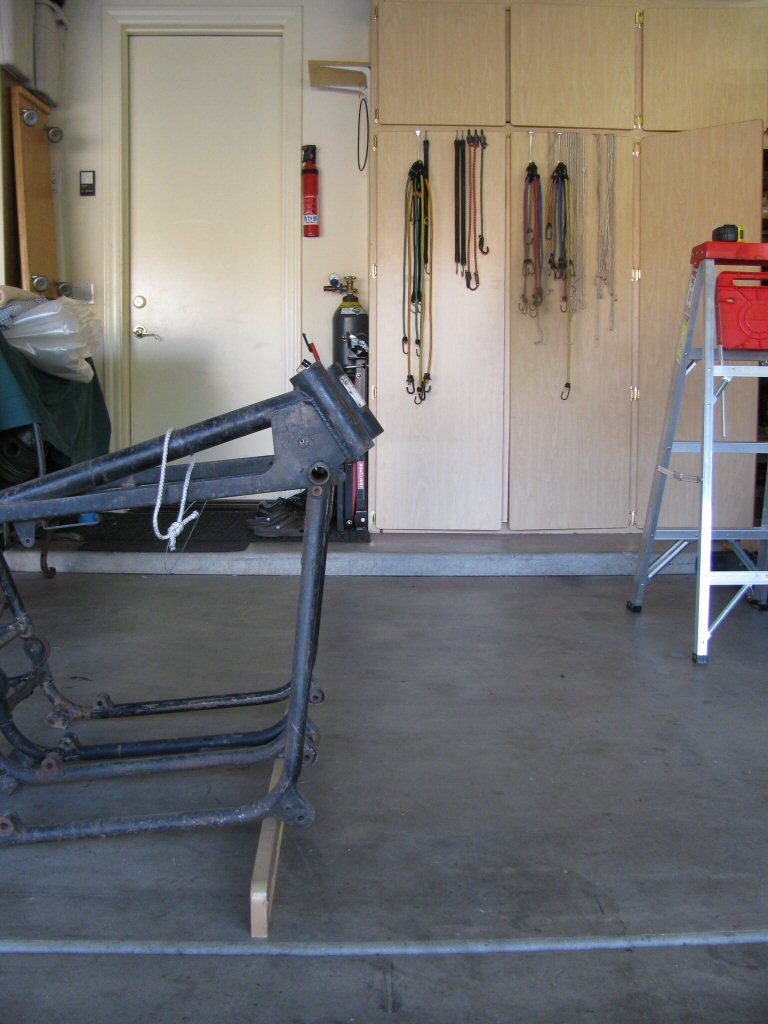
Photo courtesy of Gregory Bender.
I could not detect any real difference in rake (nor should there be any difference).
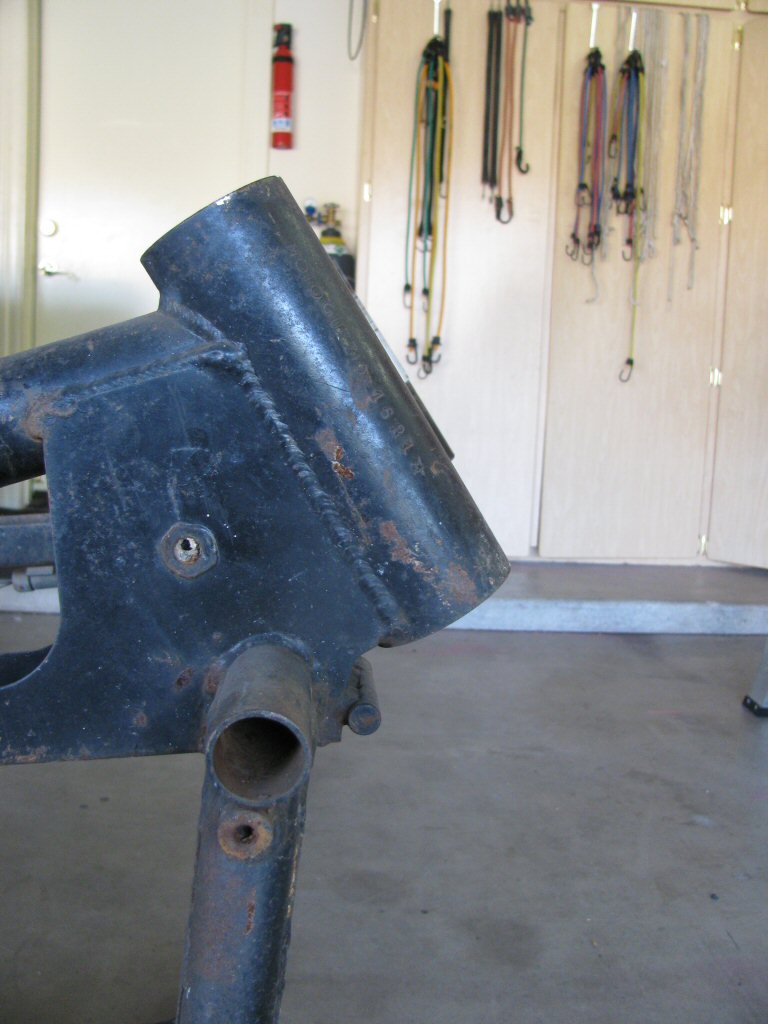
Photo courtesy of Gregory Bender.